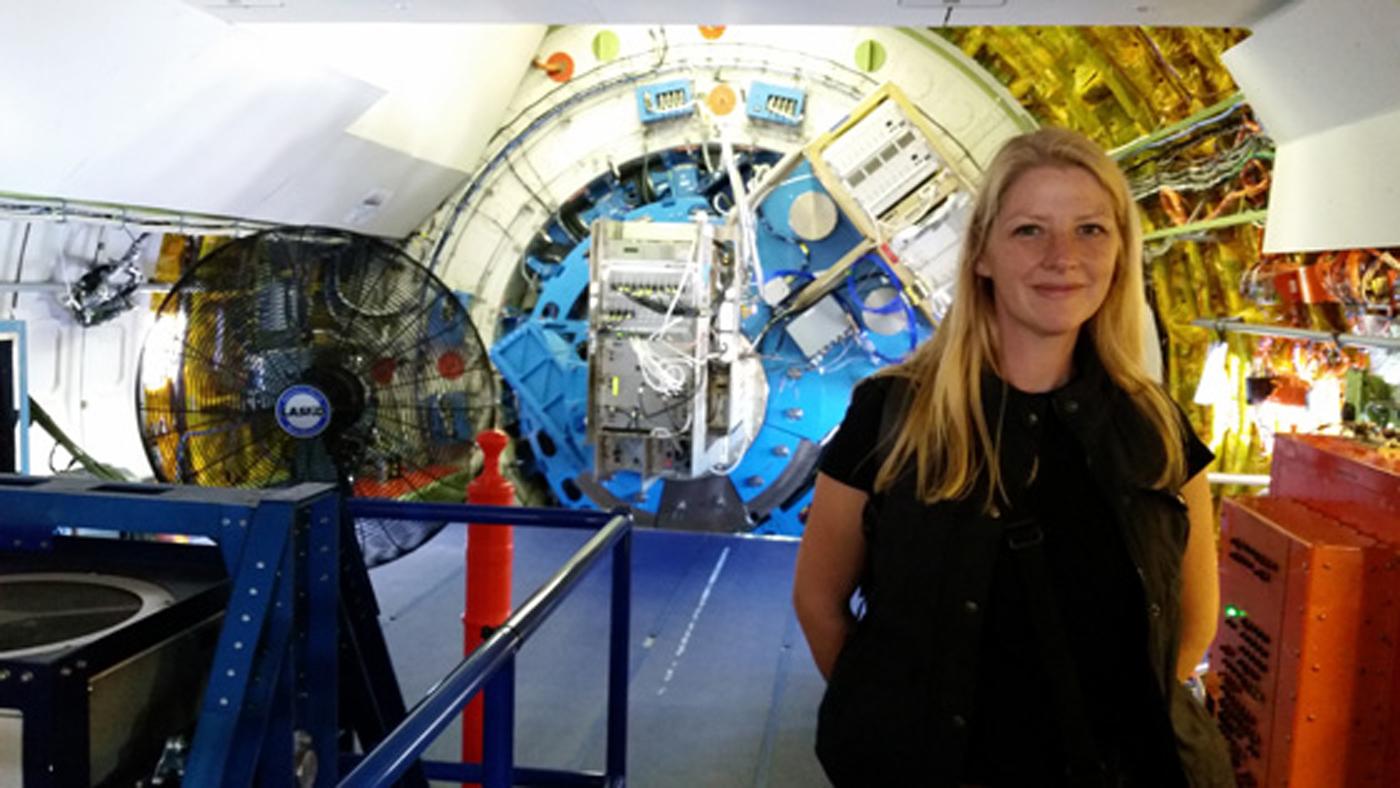A reporter flies on the SOFIA observatory for Big Picture Science's "Born Legacy" episode.

If, instead of asking an astronomer “how are stars born?”, you ask about where the coolest party is, the answer might surprise you. These get-togethers are thousands of light-years away in dusty nebulae, and require a special type of observatory to see what’s going on.
Fortunately, NASA and the German Space Agency (DLR) have a neat party trick: they’ve put a 100-inch telescope on a Boeing 747. When Big Picture Science got an invitation to hop aboard, we flew at the chance to join a team that spends ten hours a night on the airborne Stratospheric Observatory for Infrared Astronomy (SOFIA).
It wasn’t a night of cocktails and hot canapés. SOFIA has an operating temperature of -13 degrees F, and apparently so do astronomers – at least those who look at objects in infrared light. The telescope’s spectrometer needs to be kept cold to reduce interference from the relatively warm aircraft cabin. Since I wasn’t furnished with a toasty buff-colored NASA onesie, I had to carry a large flask of hot tea to keep warm.
Four flight legs took us to Texas and back, north up to British Columbia and down to Baja California. The telescope focused consecutively on regions within the Butterfly Nebula, the Orion Molecular Cloud, the photogenic Whirlpool Galaxy, and a tall nebula at Draco’s Nose. Each redirection turned the star field on the screens into a squall of diagonal rain, and lifted the aircraft a few thousand feet higher. Excited American, German, and Dutch scientists discussed the required guide stars, and mission directors relayed tiny tracking changes to the pilots.
Despite the all-pervasive background engine noise, the project teams were quietly intent on their targets, aided by the colored images on numerous digital screens and laptops. They were excited by the impending observations of ionized carbon (the so-called C+ line). The astronomers had shunned looking at the dense hot stuff in favor of these relatively cooler areas to map velocity, direction, and temperature, revealing when carbon atoms form molecules within the nebulae as a precursor to star formation. A cloud of warm gas will only collapse upon itself when it is cooled down, and that’s what these carbon atoms were doing – pulling energy from the gas as they combined into molecules.
The intensity of the work was as absorbing as it was exhausting, flying above Earth’s water-vapor laced atmosphere, witnessing distant atoms colliding and merging. To discover astronomy’s secret chat-up lines, head to 38,000 feet and watch astronomers sipping coffee, spying on carbon atoms thousands of light years away, and having their own cool party.
Listen to Emma's SOFIA adventure on this week's Big Picture Science episode, Born Legacy
--
Emma Bentley is a reporter, and flew on SOFIA for Big Picture Science





